
The Secret of Do Birds in Cages Suffer All Their Lives?
Last Updated on by Mitch Rezman
I’ve often said the perfect size cage for a Green Wing Macaw is 30 acres. Many birds can and do suffer miserably in cages. There are ways we can offset the majority of the stress for our captive birds — but many of us do not.
Full transparency — I’m a companion to one Senegal parrot and four budgies. That in and of itself does not make me an expert. What makes me an expert in my 15 years of interacting with tens of thousands of captive bird owners while operating the Windy City Parrot website
I teach cagescaping (how to set up bird cages) to individuals in their homes and at bird clubs. For the past 10 years writing my blog I spend 20 hours a week doing research on parrot behavior and husbandry.
Much as stress has to do with episodic memory — you can read about that in this eloquent blog post entitled How do animals perceive their world in zoos and aquariums?
As somebody else mentioned in this thread now is not the time or place to get into clipping or flighted debates. Birds have been flying for 99 million years, literally and they only stopped flying when humans got involved in the 20th century
I want to focus on recent research that indicates birds are much smarter than we ever thought with three times the neurons per square centimeter of brain versus mammals, especially man and monkey.
Without getting very technical, we know that the nidopallium governs migration and during migration spatial sensory stimuli actually grows making the birds smarter in real time — something called neuroplasticity
Our Senegal Peaches has two open bowls of food and 2 foraging boxes in our living room and bedroom. 90% of the time she gets her nutrition from the foraging boxes not the open bowls of food in her cage and the nightstand.
There are no open bowls of food in the Rain Forest or the Serengeti Plains of Africa. Our birds have been hardwired to be gatherers. To spend the day either searching for food or trying not to be food.
There are so many easy ways to keep our birds busy, entertained and enriched, but we blindly walk on by and justify our bird’s happiness with the purchase of expensive counter-intuitive bird pellets (and yes I sell them thank you).
The biggest problem is light. Everyone gets it wrong including the veterinarians — a bird doesn’t synthesize more vitamin D because it’s receiving ultraviolet light — if there’s a veterinarian reading this that believes UVA and UVB enhance the production of vitamin D3 (which helps a bird’s body process calcium better) I would like debate the subject in a public forum — live.
I hope to have solid research from reputable sources available to the public by this fall. But it’s not just the D3 thing we’re getting wrong.
All living organisms have circadian rhythms controlled by circadian oscillators located within your brain triggering things like spurts of melatonin. We humans living in North America get SAD during the winter because of the short light cycles during fall and winter.
Light cycles actually change throughout the year in North America. As most captive birds have come from (as I stated before) the Rain Forest and Serengeti Plains which are closer to the equator providing roughly 12 hours of darkness and 12 hours in sunlight.
Because we don’t address the light cycle issues with our pet birds the majority of them are all suffering from the human equivalent of SAD (Seasonal Affective Disorder). I’m convinced this is stressing our birds out far more than we give the issue credit for.
The erratic light cycles we subject birds to stress them out more than any cage you can put them in. Birds know precisely more accurately than a Rolex the time of day. Although they don’t know the day it is they do know that for six months year they’re not getting nearly half the daylight they need.
This can easily be fixed with a full-spectrum bulb placed no more than 6 inches over the top of the bird’s cage on a timer so the bird wakes up and goes to sleep in the cage when the light goes on and off indicating the beginning and end of the day.
Beyond lighting, the view from a cage can be frightening for many birds. Move a painting on the wall which is nothing for you but can stress out your bird for weeks, the same holds true for new pieces of furniture.
On the flipside we have four budgies whose wings I haven’t gotten around to clipping for training purposes thus they have not left the cage in months. I watch these birds for hours a day and they are happy. They’re always talking amongst themselves while always active and always interacting with one another. So as somebody else mentioned in one of the other answers species has something to do with this.
https://www.youtube.com/watch?v=DDmD9aM1yZA
The higher functioning birds. Psittacines will probably be more freaked out over time than the smaller birds with smaller brains like budgies and canaries.
The country of India has banned the keeping of their native bird, the Indian ringneck — but there are some really big captive aviaries in India.
We need to look at a bird’s environment holistically. If the bird sees its cage as someplace that it’s comfortable and secure to enter at night and to sleep and occasionally grab some food and water, that birds will be less stressed.
If a parrot is in an undersized cage with a single tube bell in the middle and nothing else to do other than stare at four walls and the cage does not back up to at least one solid wall providing privacy — that bird will probably be stressed it’s entire life.
Written by Mitch Rezman
Approved by Catherine Tobsing
Your Zygodactyl Footnote
Author Profile
Latest entries
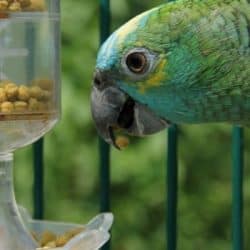 Feeding Exotic BirdsDecember 29, 2025How to Switch or Convert Your Bird From Seeds to Pellets: Real-Life Case Studies and Practical Guidance
Feeding Exotic BirdsDecember 29, 2025How to Switch or Convert Your Bird From Seeds to Pellets: Real-Life Case Studies and Practical Guidance Feeding Exotic BirdsDecember 16, 2025A Practical, Budget-Smart Guide to Feeding Birds Well
Feeding Exotic BirdsDecember 16, 2025A Practical, Budget-Smart Guide to Feeding Birds Well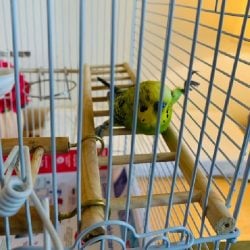 Bird EnviornmentsDecember 7, 2025Understanding Budgie Cage Bar Orientation: Myths, Realities & Practical Solutions for Vertical-Bar Bird Cages
Bird EnviornmentsDecember 7, 2025Understanding Budgie Cage Bar Orientation: Myths, Realities & Practical Solutions for Vertical-Bar Bird Cages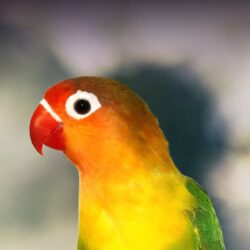 Feeding Exotic BirdsDecember 5, 2025How Dr. T.J. Lafeber Rewrote the Future of Pet Bird Nutrition
Feeding Exotic BirdsDecember 5, 2025How Dr. T.J. Lafeber Rewrote the Future of Pet Bird Nutrition
This Post Has 15 Comments
Leave a Reply
You must be logged in to post a comment.
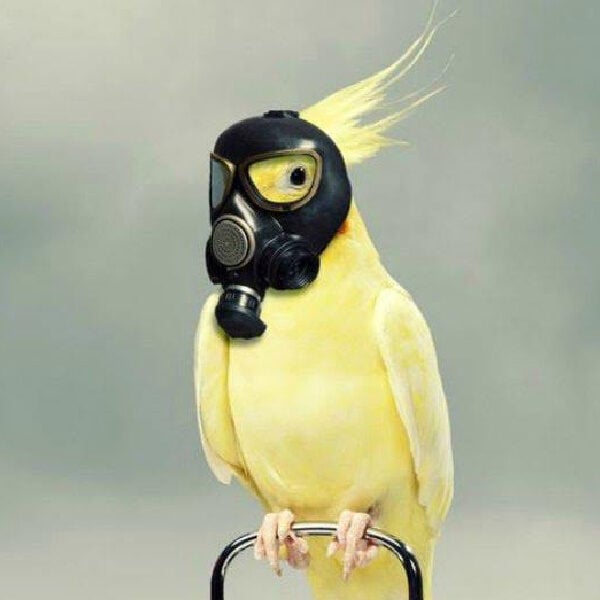

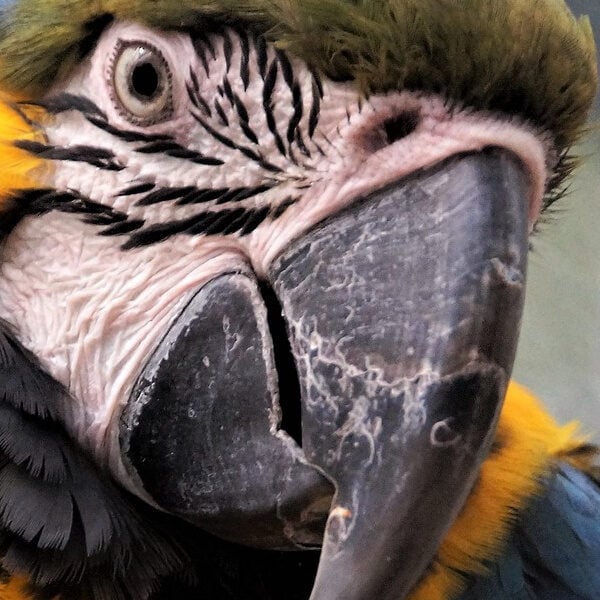
Lisa
9 Jul 2017Always a pod topic – thanks, guys!
Lisa
9 Jul 2017Ugh – “always a good topic.”
WindyCityParrot
9 Jul 2017thank you
Lisa
Martha Howe
9 Jul 2017I have an 8 year old Timneh African Grey. She is put to bed in a night cage at about 7 PM and gotten up at 7 AM. Sometimes she wants to go to bed earlier. She sleeps in a separate King’s cage that I cover, and I use a heater to be sure she is warm enough if it is a bit chilly. When I get her up I take her to the bathroom and ask her to do a “good poop” which she promptly does. She has never once pooped in her night cage. I spend most days at home and Emma is free flighted in a house full of windows where she has perches that give her lots of light. She is extremely sweet and quiet and very independent, although she does love her scritches at about 5 PM..
I hope that this is helpful information for some bird people.
WindyCityParrot
10 Jul 2017Very helpful Martha
Troy Parrish
9 Jul 2017I love the foraging box and we do similar things with our Senegal. She has never cared for almonds though.
WindyCityParrot
10 Jul 2017Peaches like sunflower kernels and walnuts too Troy
Julinka
9 Jul 2017My Amazon seemed to enjoy being in the center of the room where
she could see everything going on. I had her against a wall previously. My small birds get so excited when it’s their time out. They are all flighted. My parrotlet was on antibiotics with no time out for a few days and he actually said “Let me out!”
I enjoyed the foraging video.
WindyCityParrot
10 Jul 2017love to hear that Julinka
Sookiebird
10 Jul 2017I love the goings-on of budgies! I fostered some for awhile and was sad to see them go (but happy they got a new home). I’d love to do a birdie cam on my three (grey, Amazon, Meyers). Would you do a post on the pros and cons of a birdie cam? While I love the idea of seeing what they do when i’m not around, I worry I may become the ultimate parrot voyeur and bird-cam addict! Lol.
WindyCityParrot
11 Jul 2017parrot voyeur and bird-cam addict! almost sounds kinky 🙂
Birdnurse
11 Jul 2017Budgies are Psittacines. Canaries are not – they are a type of finch. Also, not all birds have the same density of neurons. The top of the list are corvids (ravens, crows, some jays) and psittacines. Chickadees are high on the list but partridges are low. Birds that hatch ready to forage (precocial), like chickens, ducks, etc., tend to have little brain growth through out their lives while those who are born naked and with their eyes closed ( Altricial)tend to have greater and ongoing brain growth throughout their lives. Also, an elephant has a brain 3X the neuron density of man’s but 98% of the nerve density is located in the cerebellum where control of the trunk is located. In “smart” birds and man, 80% of the nerve density is located in the cerebrum. In man, this is the grey matter that grows as the human develops from an infant to an adult causing the “wrinkles and bumps” (sulci and gyri) that the human and mammalian brain displays. The “smart” bird brain develops differently and does not have the same external appearance of the human (mammalian) brain. The dense areas are within the brain itself. Irene Pepperberg says we cannot make comparisons between the human brain and the bird brain although they do similar things cognitively. She says the brains are more like a PC and an Apple. They use difference systems but in the end they accomplish the same things.
No, I am not a bird neurologist or ornithologist but recently I have been reading large number of books about bird behavior (not just parrots, although they those books are my favorites). My most recent favorite is “The Genius of Birds” by Jennifer Ackerman. It is scientific and goes into the evolution of birds and the bird brain describes studies of many different types of birds but it is immensely readable (at least I have found it so) and both interesting and enjoyable. After each chapter I want to seek out like minded friends and share the fascinating things I am discovering and you, readers, happen to come along at the right time. I am putting together a list of my favorite books of this type, complete with reviews, and would be happy to make it available to Windy City to put on line if they so wish. These books have made a real difference in my appreciation of my birds and have given me ideas of things to do to enrich their lives.
WindyCityParrot
11 Jul 2017Thank you for the wonderful comment Birdnurse – you have an open invitation to guest blog anytime – I’ll give you access to the blog if you request it
Elizabeth Little
27 Aug 2017Thank you for sharing the article you attached involving animal memory and their cognition of time! How do animals perceive their world in zoos and aquariums?
Read more: https://windycityparrot.com/blog/2017/07/05/birds-cages-suffer-lives/#ixzz4qyukgkAD
Follow us: @windycityparrot on Twitter
Most excellent! It answered a lot of my questions that I didn’t know COULD be answered!
WindyCityParrot
27 Aug 2017Glad you enjoyed it Elizabeth
Elizabeth Little
27 Aug 2017Thank you for sharing the article you attached involving animal memory and their cognition of time! How do animals perceive their world in zoos and aquariums?
Read more: https://windycityparrot.com/blog/2017/07/05/birds-cages-suffer-lives/#ixzz4qyukgkAD
Follow us: @windycityparrot on Twitter
Most excellent! It answered a lot of my questions that I didn’t know COULD be answered!
WindyCityParrot
27 Aug 2017Glad you enjoyed it Elizabeth